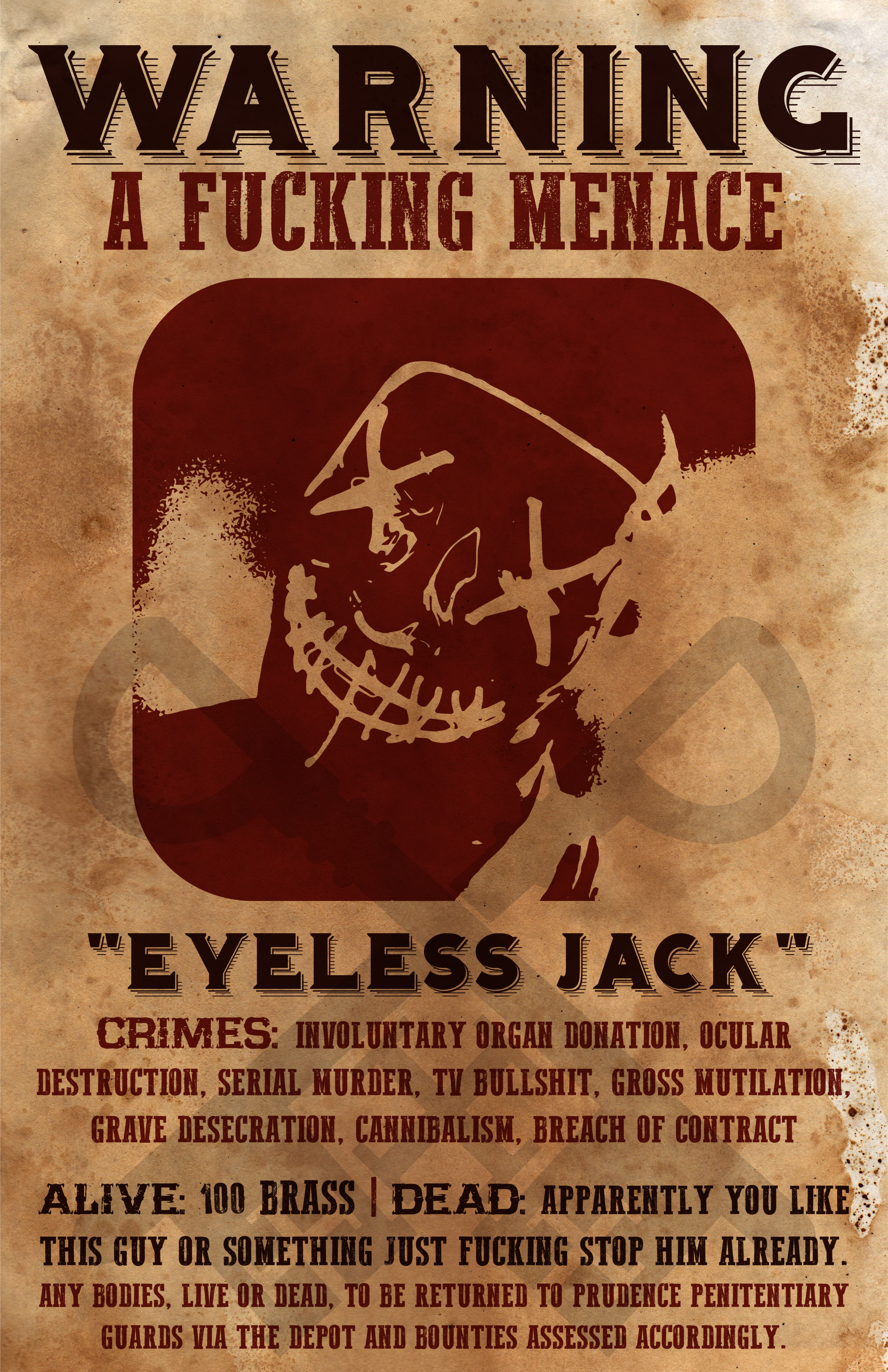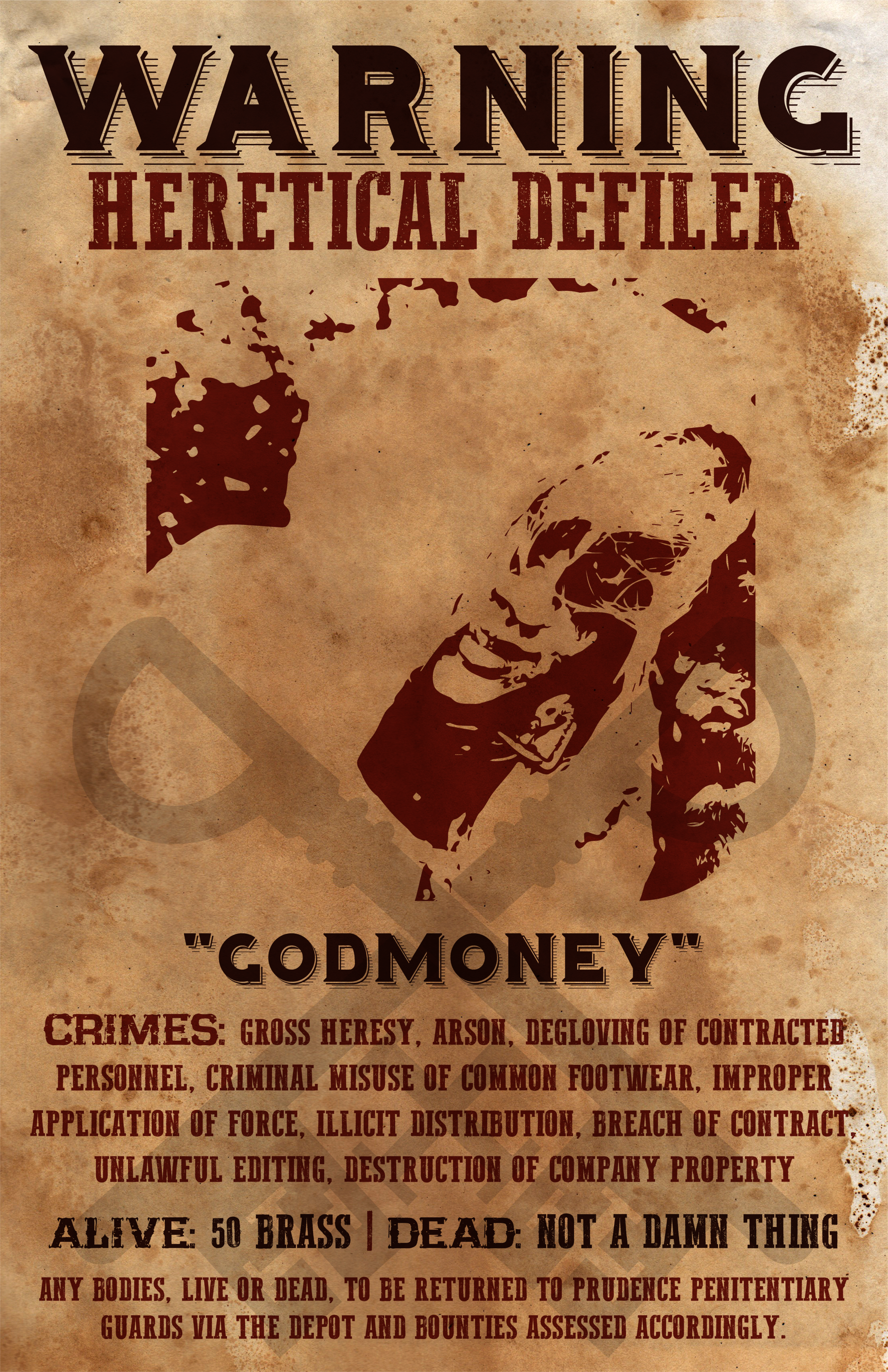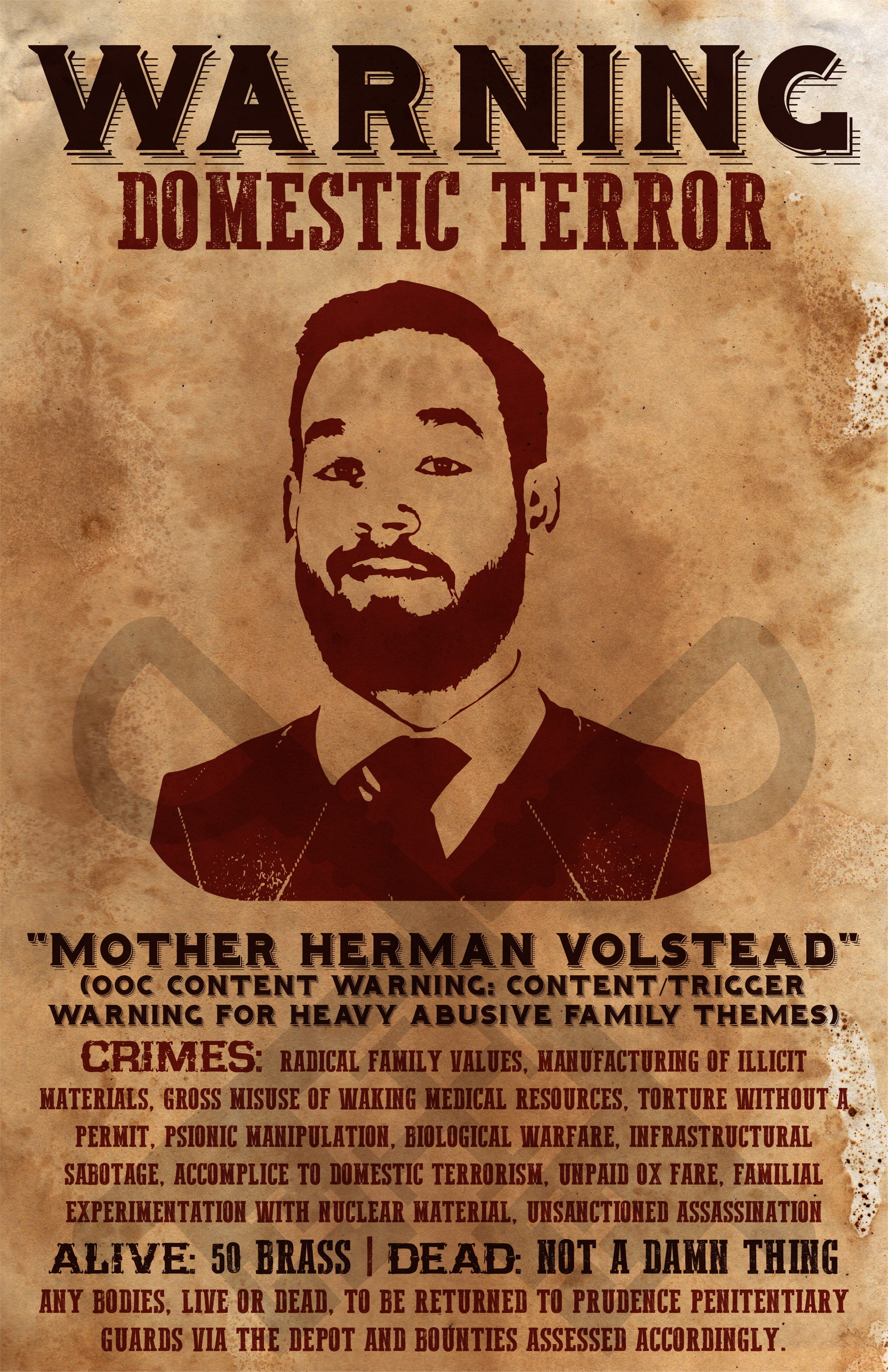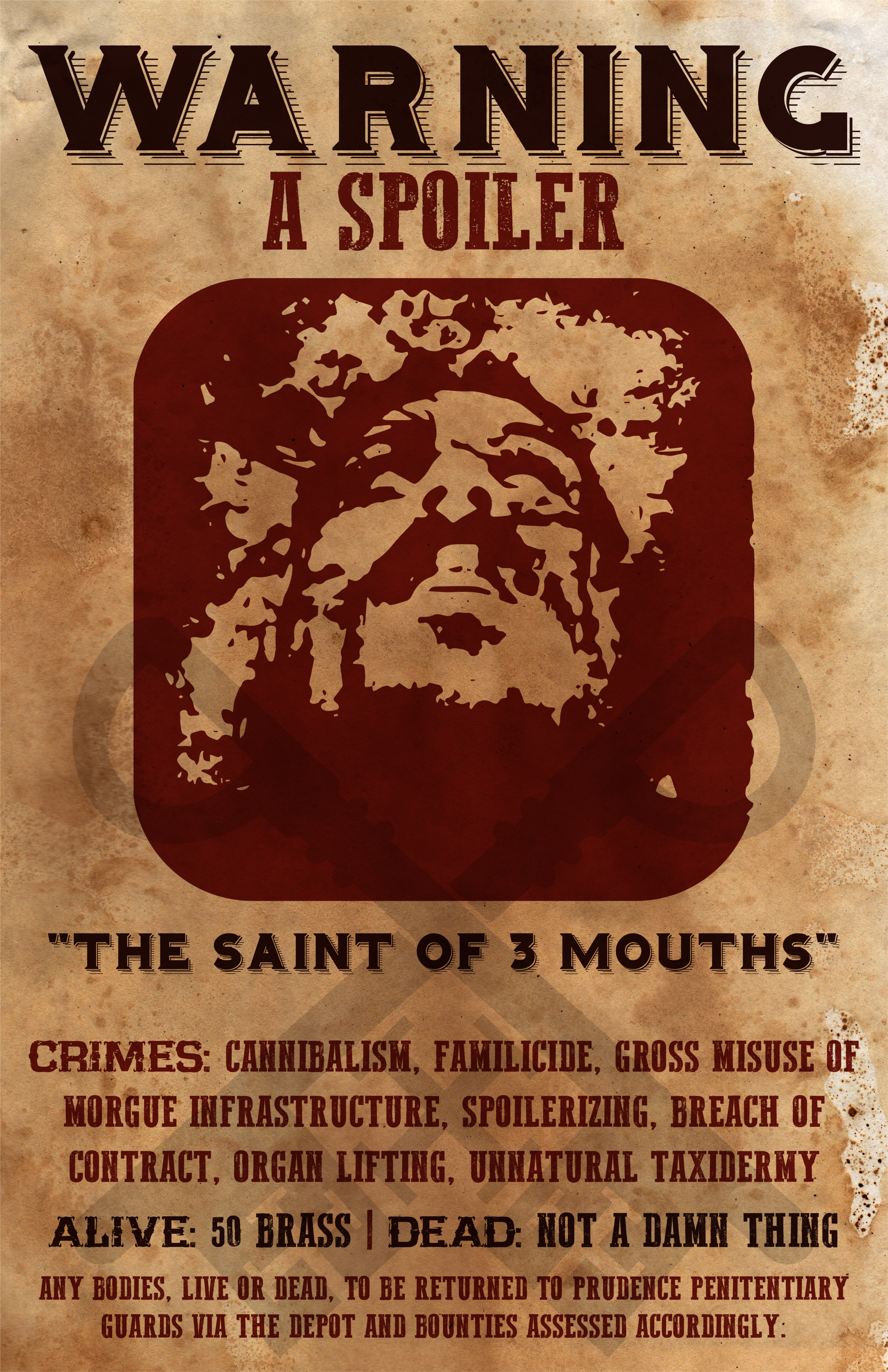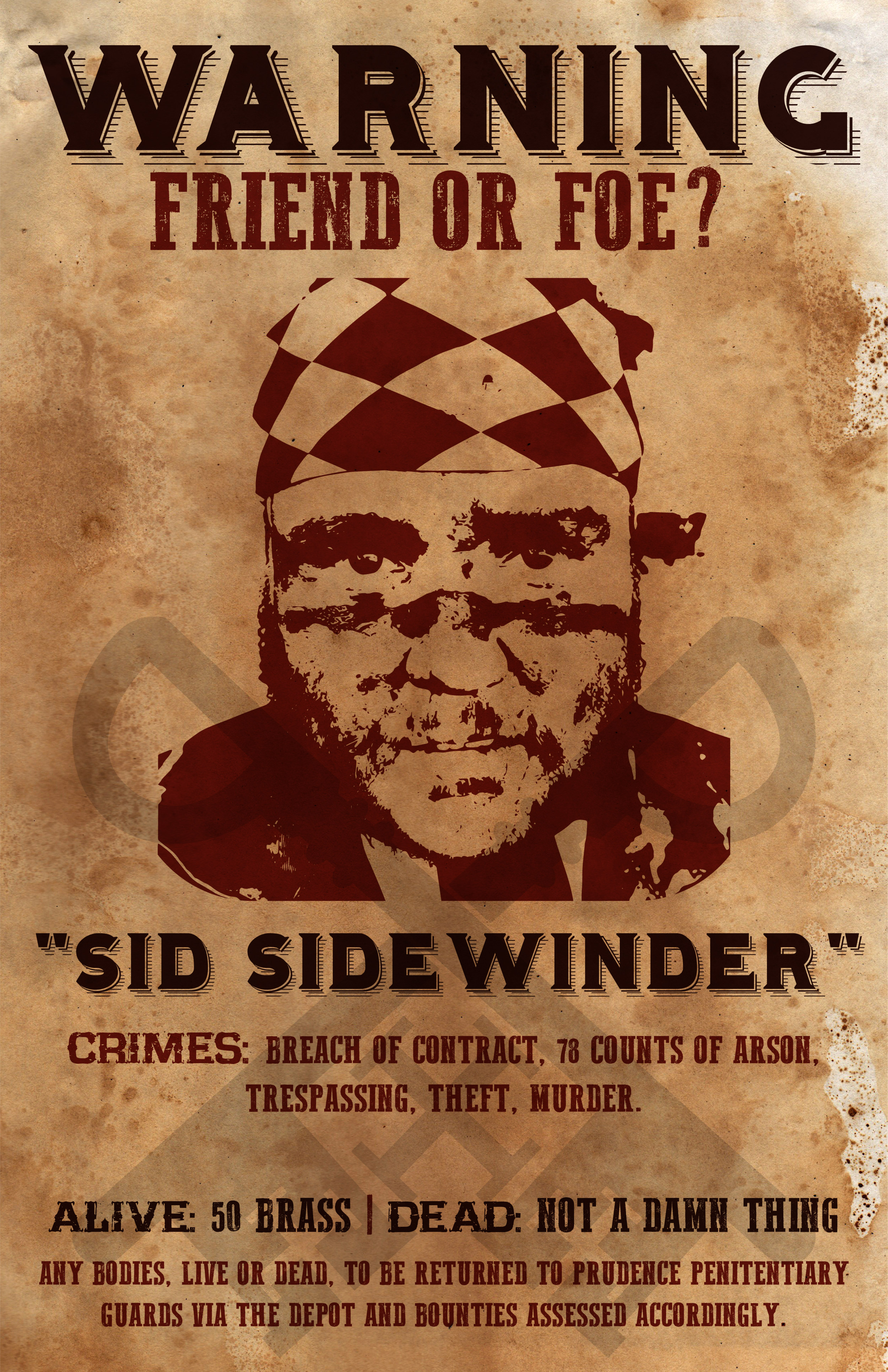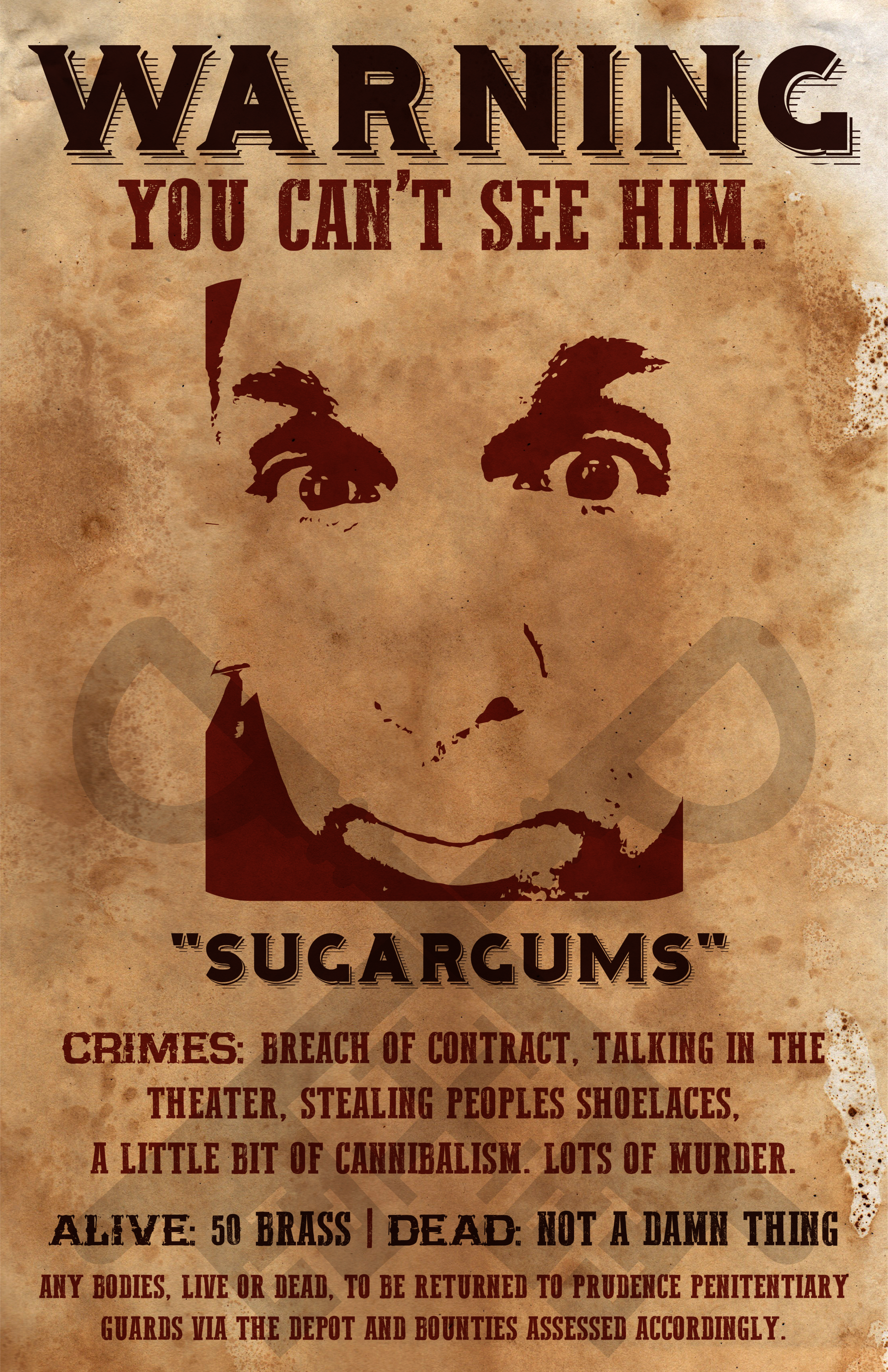Jonathan here! This last weekend, we had our October game, Carnival Macabre, and a few big events happened over the weekend I’d like to recap. My hope is to cover something like this after every game to fill in the blanks for folks that might have missed some of the big plot points over the weekend for one reason or another.
Two major events happened during this last game: The Indulgence, and the Lone Star Cup.
The Indulgence
The October game coincides with the annual Indulgence - a “holiday” of sorts where for 24 hours the laws are suspended and the dangerous Lifers of Prudence Penitentiary are released. This event occurs each year and we play up the threat with unique, intelligent antagonists. This year included a few notable appearances by Lifers from previous years as well as brand new faces that wrecked their particular brand of terror and mayhem on Bravado.
Since the Penitentiary doesn’t take the prisoners back for 24 hours, the trick of the Indulgence is simply to endure and survive. An added complication this year was that the Lifers were tasked with dragging back helpless subjects to a house of torture, the Chateau la Mort, ran by the Unstable mad scientist known only as The Butcher. In their charnel house, the Butcher was tasked with collecting organs from her subjects through unnecessary surgery and electroshock therapy. Many Vados were harvested as involuntary organ donors, while several even died as the Butcher took everything they had to give.
Through diligent research, the heroes of the town were able to identify how Tabitha St. Mercy, the Warden, was able to track down her Lifers after the Indulgence and realized that they needed capture as many of the Lifers as they could alive. The town was unable to discover the location of the Chateau until it was too late, and the Butcher escaped with the harvested biomass collected from the townsfolk of Bravado. What she intends to do with it we may soon find out soon…
At the end of the weekend, we still had a few Lifers to account for:
Eyeless Jack, the Nemesis Mindkiller of Killhouse, was finally returned to his cell after nearly two years on the loose. He was beaten by a combined effort of the townsfolk building the Depot into an inescapable trap, and the quick thinking of Patchup and Hammers in disarming and disabling the psychotic Unstable. Eerily, the Nemesis’ final request before incarceration was simply to deliver a letter to his father, a doctor in the Lovelace homestead of Widow’s Peak.
Mother Herman and Father Diane Volstead, crazed Nuclear Family killers and gangsters, were given a chance at freedom and allowed to escape. The town even removed the implanted psionic crystals that allowed Tabitha to track them and the Volsteads were airlifted out of town on a zeppelin. This decision probably won’t come back to haunt people, don’t worry.
Adam Moriarty, the “Spider” of Killhouse, was brutally executed by the town in an attempt to free Eyeless Jack. He remains at large and since he was the only lifer actually KILLED, he is the hardest to track and recapture. Having a Nemesis based on a Sherlock Holmes villain on the run with a reason to seek revenge on those that stopped his machinations seems like something you’ll have to deal with in the future.
The Siren, a powerful psion with a dangerous secret, was actually smuggled out of town before the Indulgence ended. She was last seen on a caravan headed towards the Clutch, freed of the strange psionic muzzle that kept her from talking or using a dangerous psionic scream.
Sid Sidewinder, the Nomad arsonist that was found to have been controlled by the villainous Volsteads, was set free of his chains and given a vehicle to escape Bravado by his friends in the Diesel Jock clan known as the Road Royals.
The Saint of Three Mouths, a gluttonous Hedon that escaped Killhouse once by having people literally eat him alive, escaped with the Butcher away from the Chateau la Mort. He is still at large and is presumably still cannibalizing his way across the Lone Star.
Daniel the Quiet, the lost scion of the Lovelace Family imprisoned in Killhouse for some “redacted” crimes, was last seen headed back to his family in Widow’s Peak. He is still at large, and escaped relatively unscathed.
That’s quite a few of the prisoners of Killhouse that are still unaccounted for at the end of the Indulgence. Surely they will all just return to their cells now that the laws are reinstated?
The Lone Star Cup
The other event this weekend was a tournament of the best Murderball teams in the Lone Star. The violent rugby-style game where every weapon deals Mangle Limbs instead of damage was sponsored by the Chairman of the San Saba Board. As a Murderball fan themselves, the Chairman even sweetened the pot a bit — the winner of the Lone Star Cup would choose who would be given an honorary VOTING position on the San Saba Board. Clearly, Tabitha St. Mercy wanted to earn a second vote on the Board, but other folks had equally viable interests.
Each major settlement and faction fielded a team into the contest, from the Barogue Behemoths, the Waking Naval Reserve, Widow’s Peak Avalanche, the Clutch Oilers, and the player led Bravado Breachers. Opposing the Breachers in the tournament game were the Killhouse Punishers, filled with the ranks of Lifers. The Punishers literally murdered some of the other teams (those poor, poor Behemoths), but were defeated by a combination of some retributive cheating, distracting the ref, and good old fashioned strategy and great plays by the Breachers. At one point, the Vados cheated to swap out a member of the Lifers for one of their own - the pyrokinetic Bea Forget-Me-Not!
The members of the victorious Bravado Breachers were Mikheil, Lyah Berry, Boris Sokolov, Drea Talrain, Criss Talrain, Justin Mercer, and Gregor McAxe! In the end, the success of this team earned the Vados the right to choose who gained the prize for the tournament (though the trophy itself was sold to the Lifers).
And much to the surprise of the Chairman, they chose The Junkerpunks (and specifically Admiral Sinker Swim!) to earn a seat on the board.
This is especially interesting, considered that the Junkerpunks were the only faction to be denied a seat on the Board by the veto of the Chairman themselves. How scandalous! This promises to have FAR reaching effects in the coming months as the balance of powers between the various factions of the San Saba shifts with the addition of the Junkerpunks to the Board.
UP NEXT: BLOOD FEAST
Our next event is coming up soon, and we have tickets already available for purchase HERE.
Our next event premise is going to be centered around some good old fashioned Thanksgiving traditions. Gathering with your friends and family. Enjoying a meal together. Eating your family… I mean, eating WITH your family. Good old fashioned cannibalism…
Lately, people have begun to go missing. Not just psions who are historically preyed upon by Confectioners across the Lonestar, but farmers and ranchers with no aberrant leaning in their family histories. Less than a month ago, the Vado citizenry experienced a rash of kidnappings designed to lift biomass from the delving population. Whispers of Bloodscourge, a plague spread by Bloodghasts that has come to haunt the Lonestar in the late Autumn, have also begun to crop up at the numerous edges of the public consciousness. Something is stirring in the guts of the Lovelace Lands, and it carries with it insidious purpose.
We can’t wait to have you join the BLOOD FEAST!




